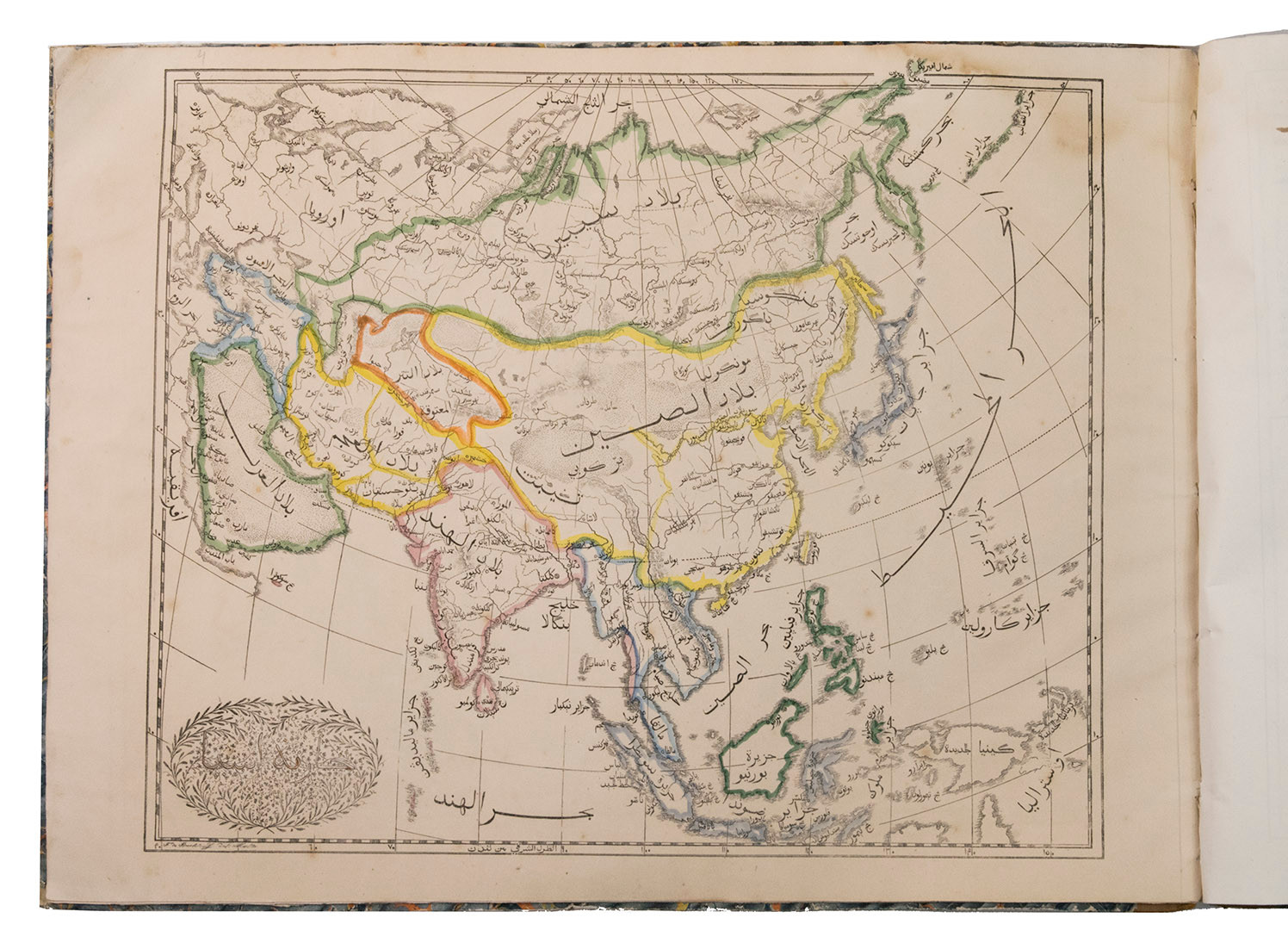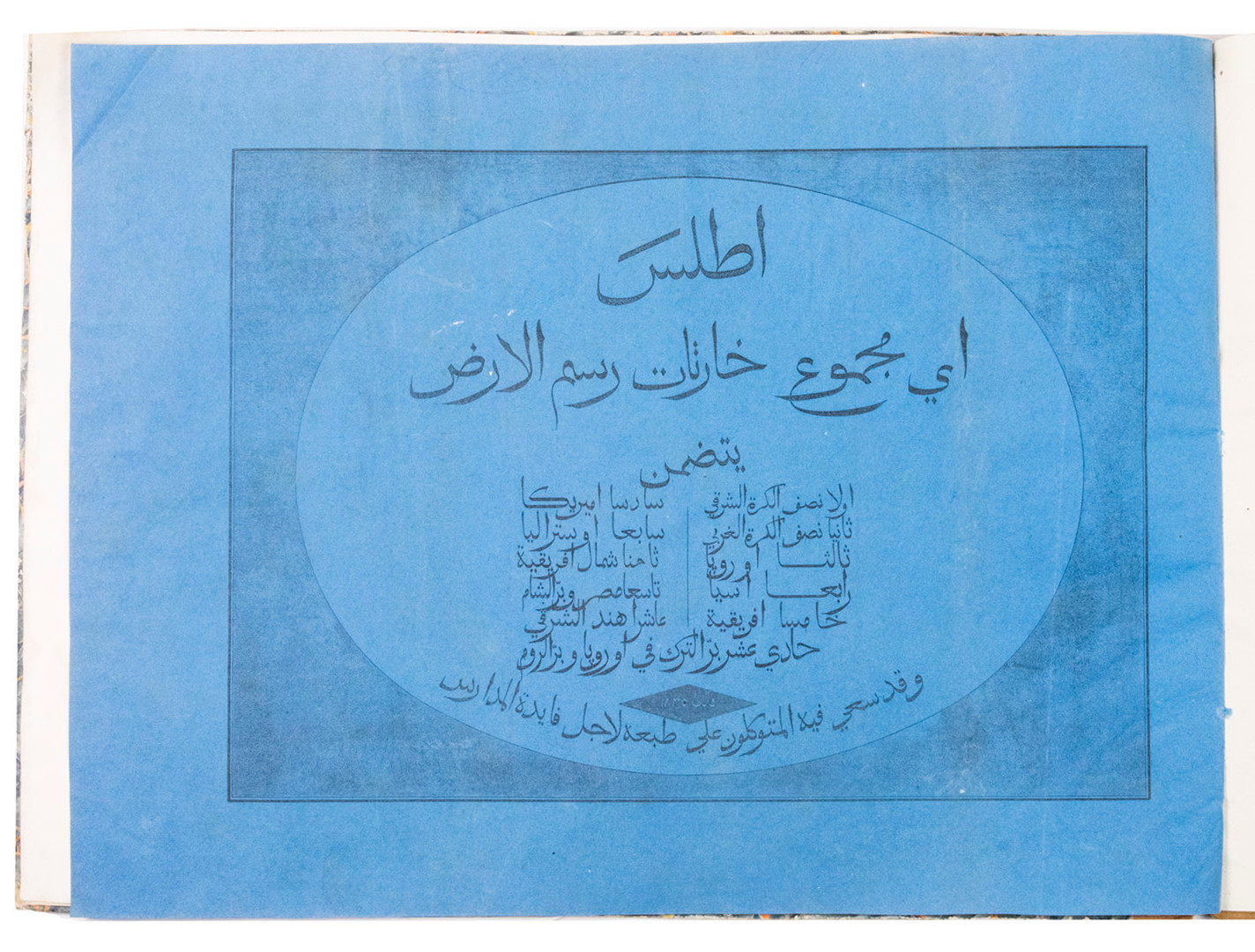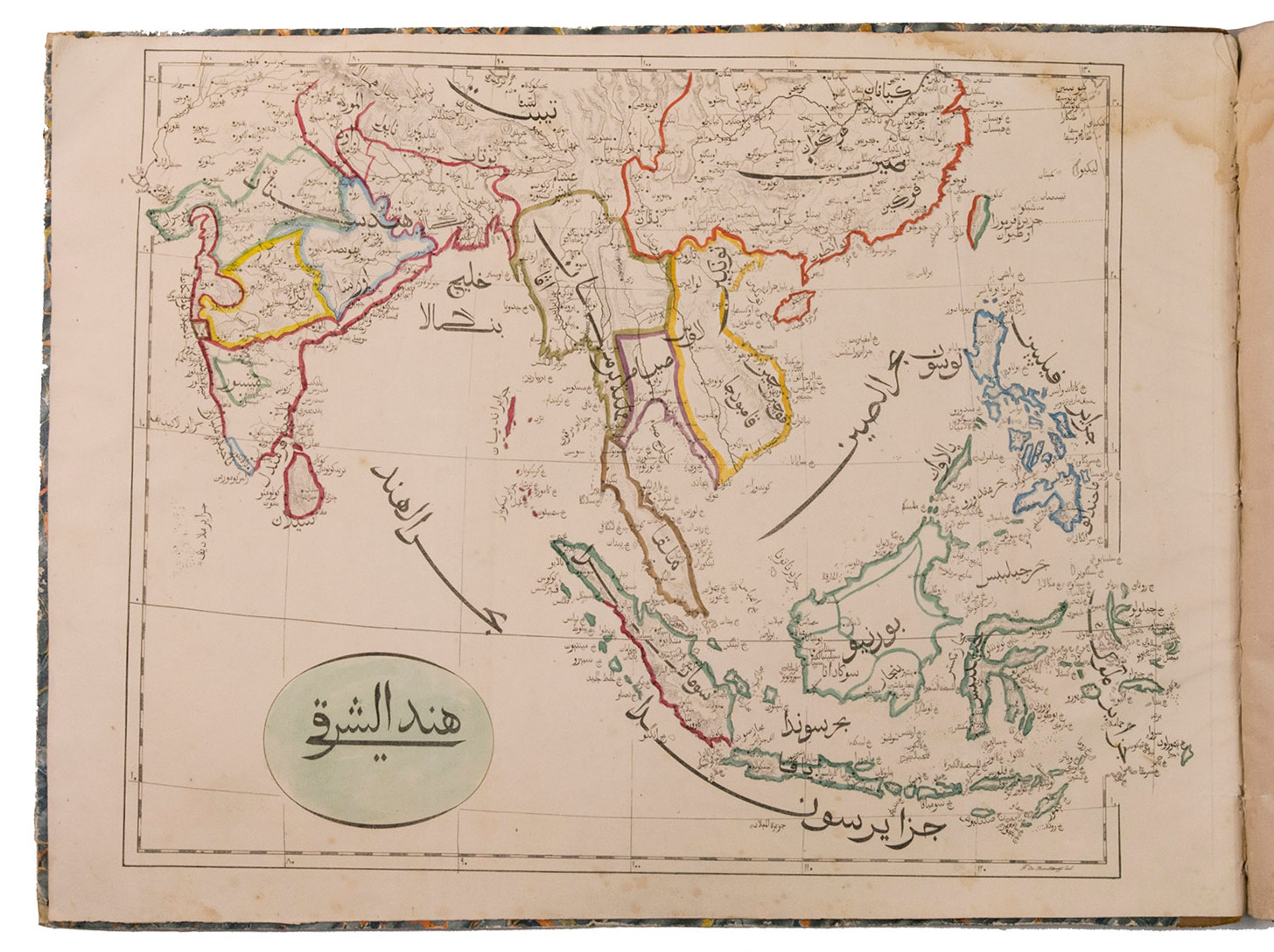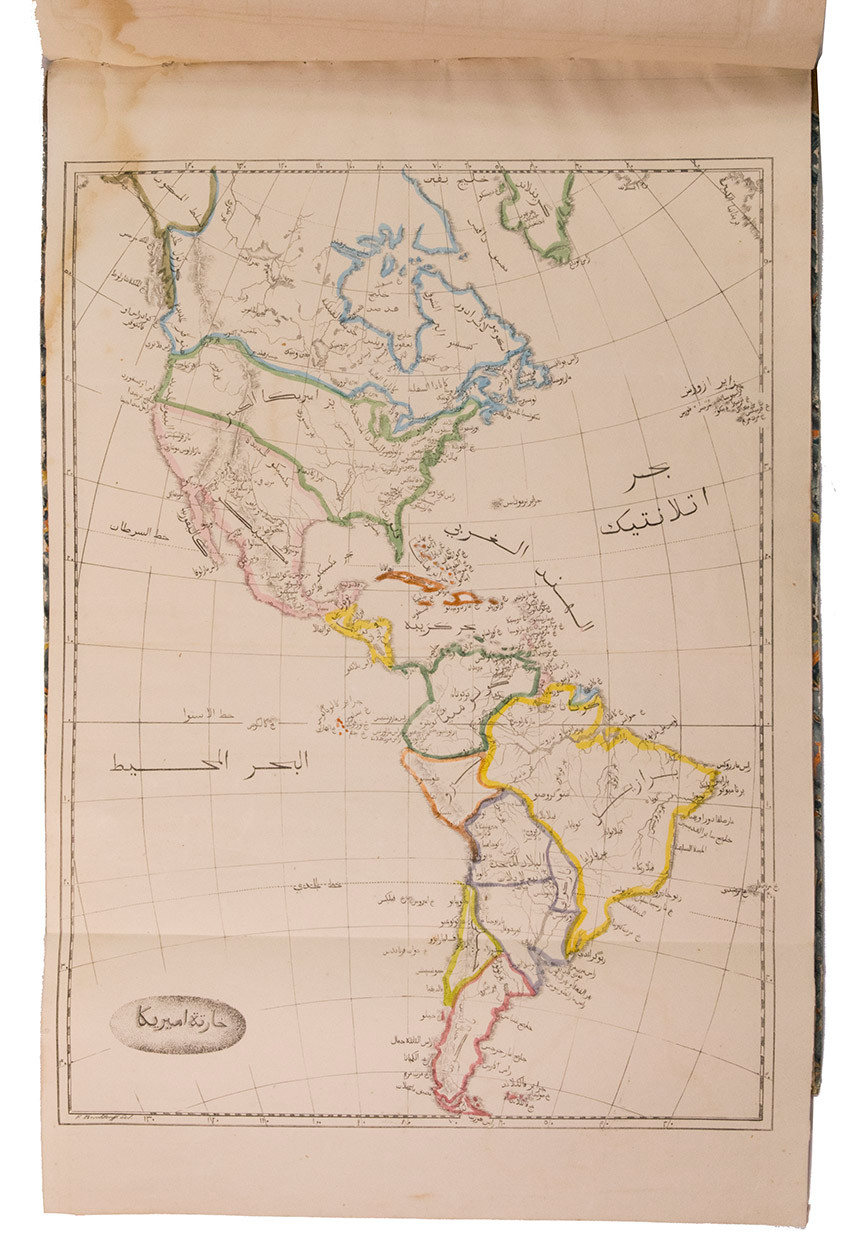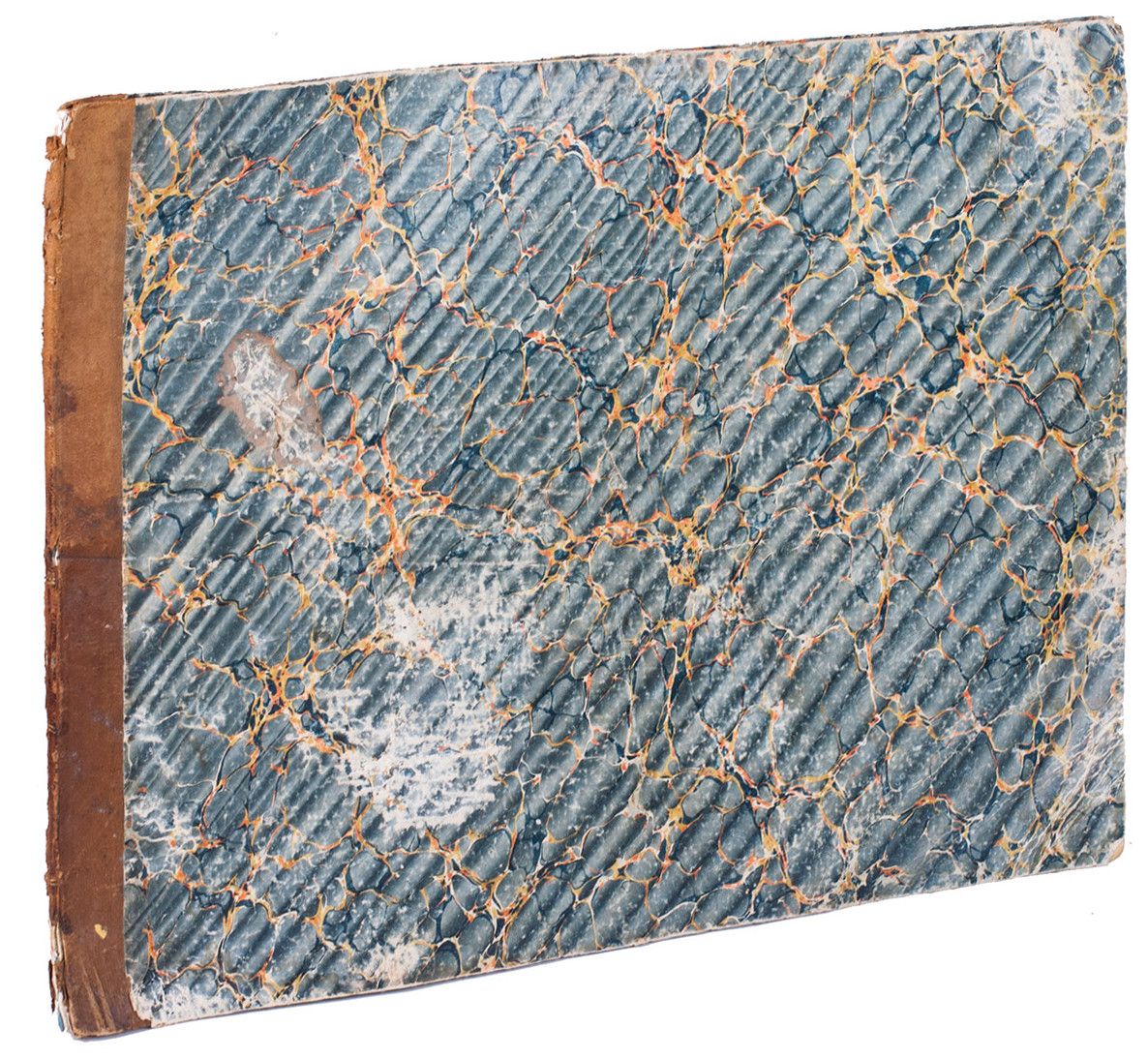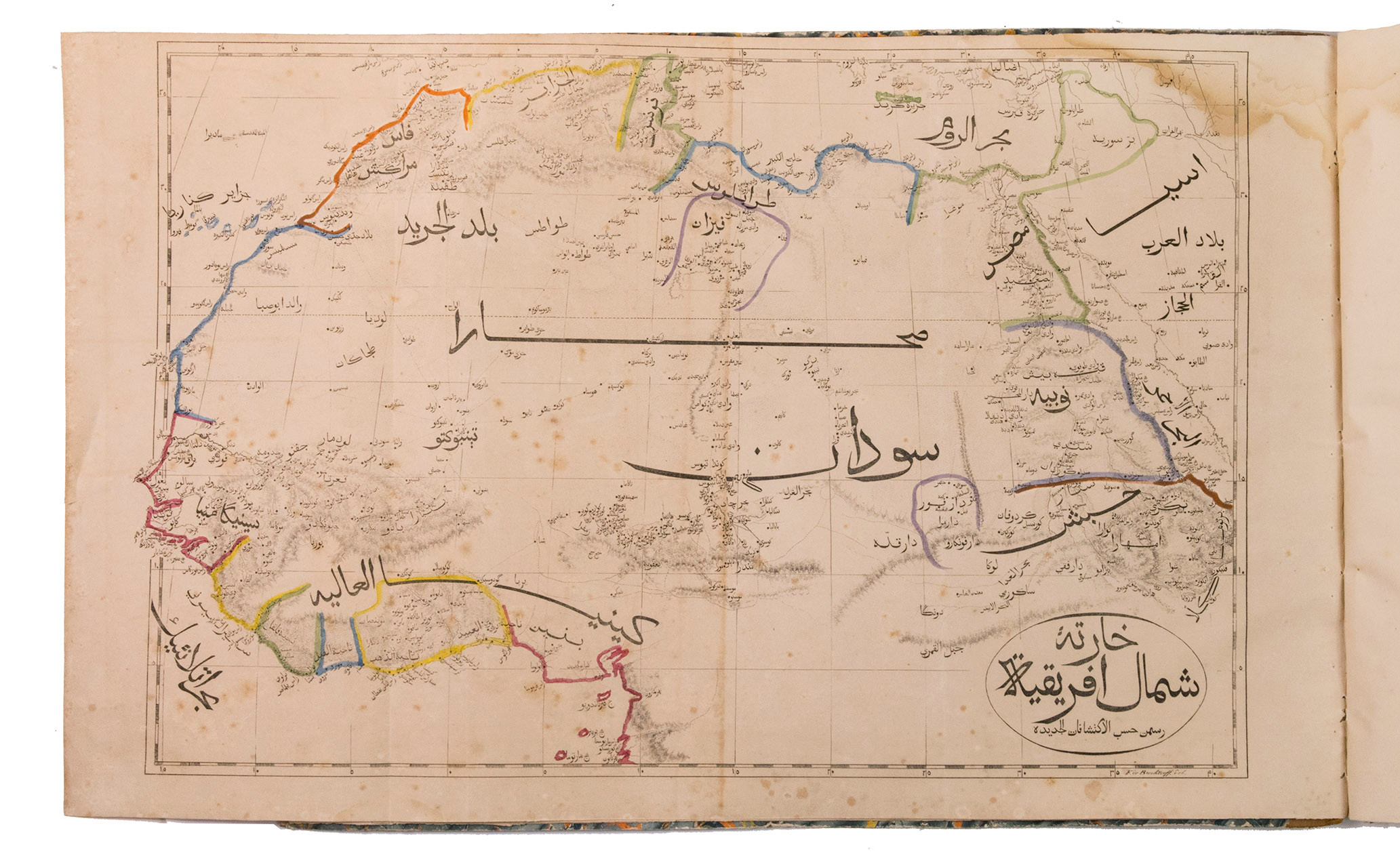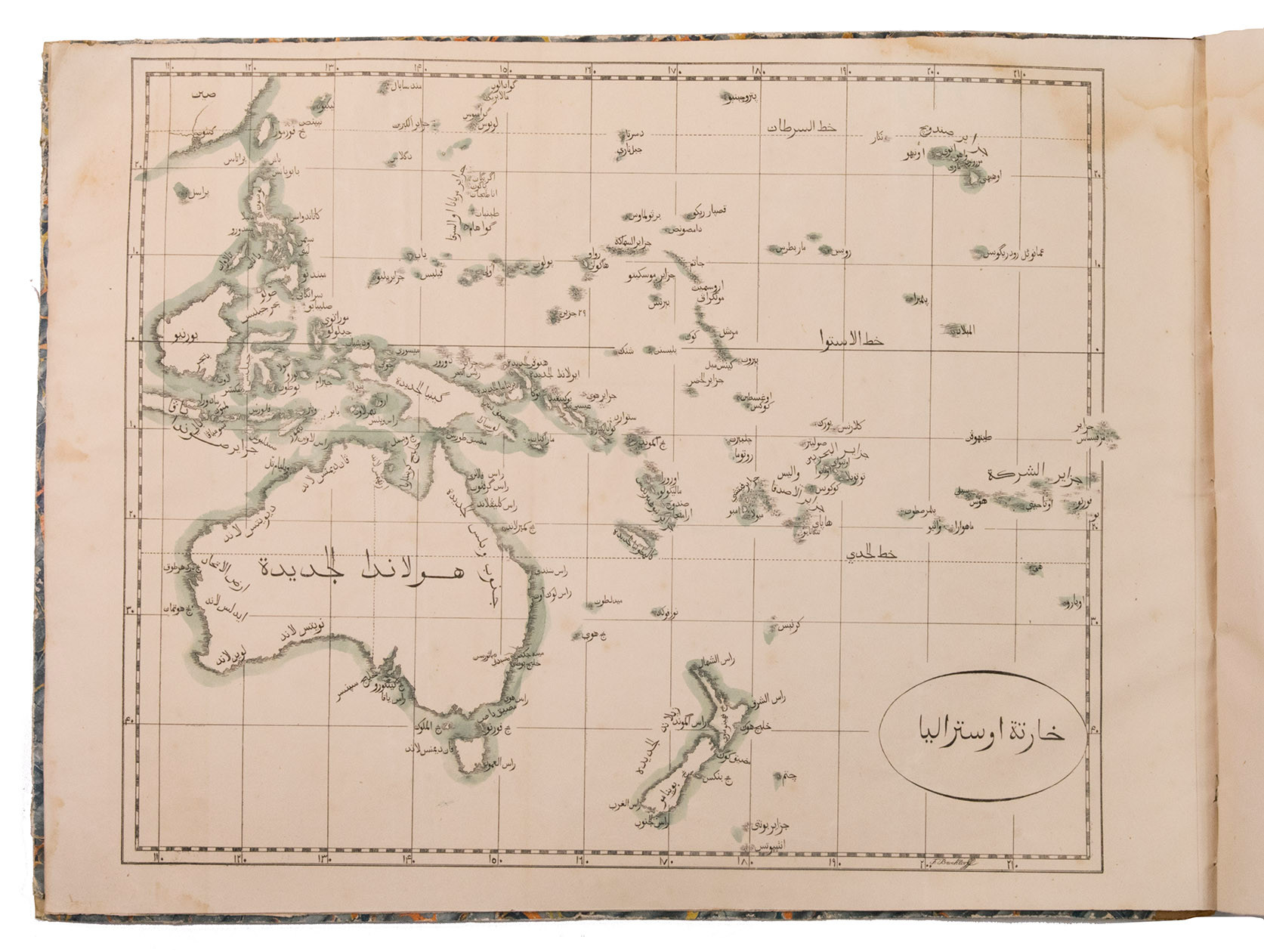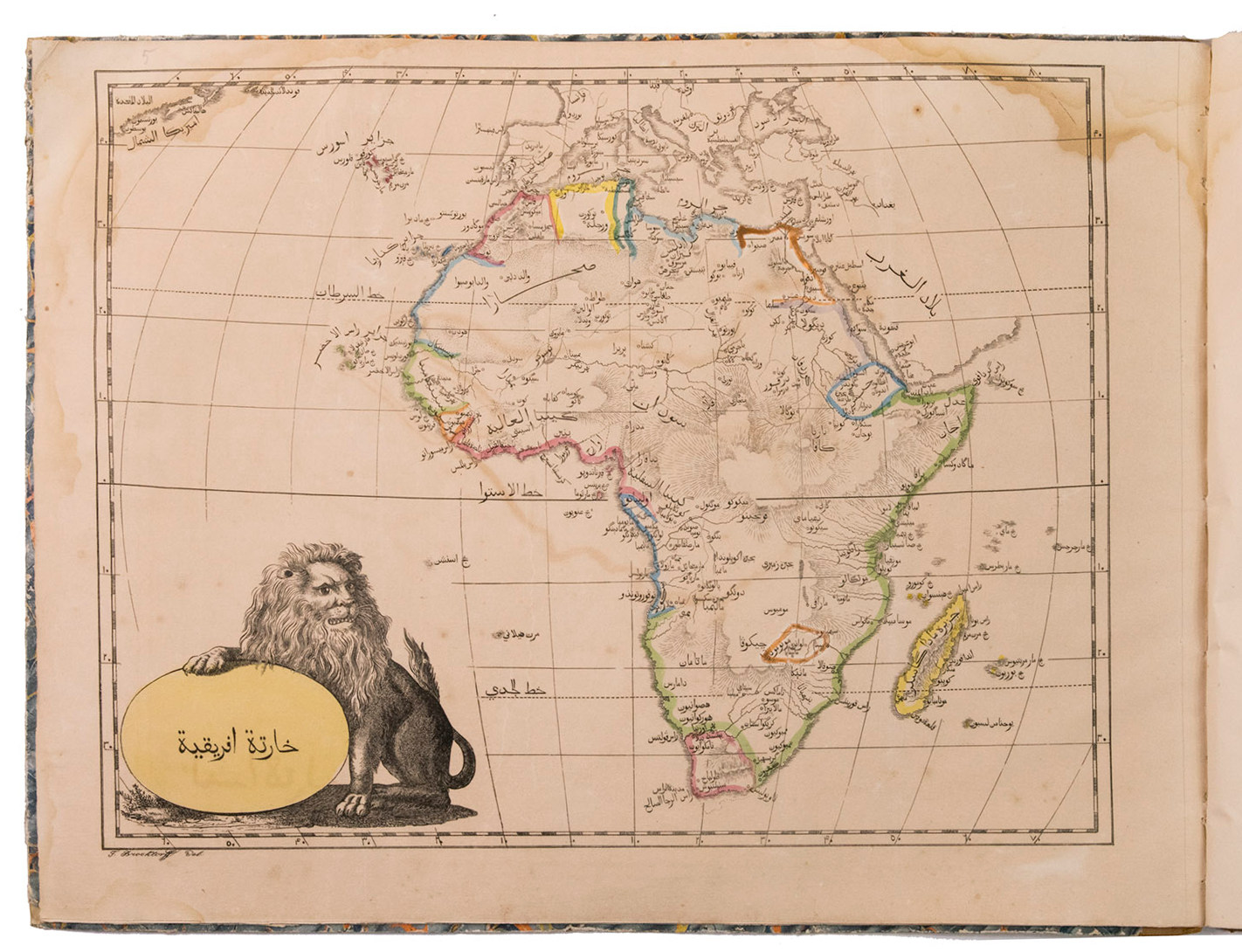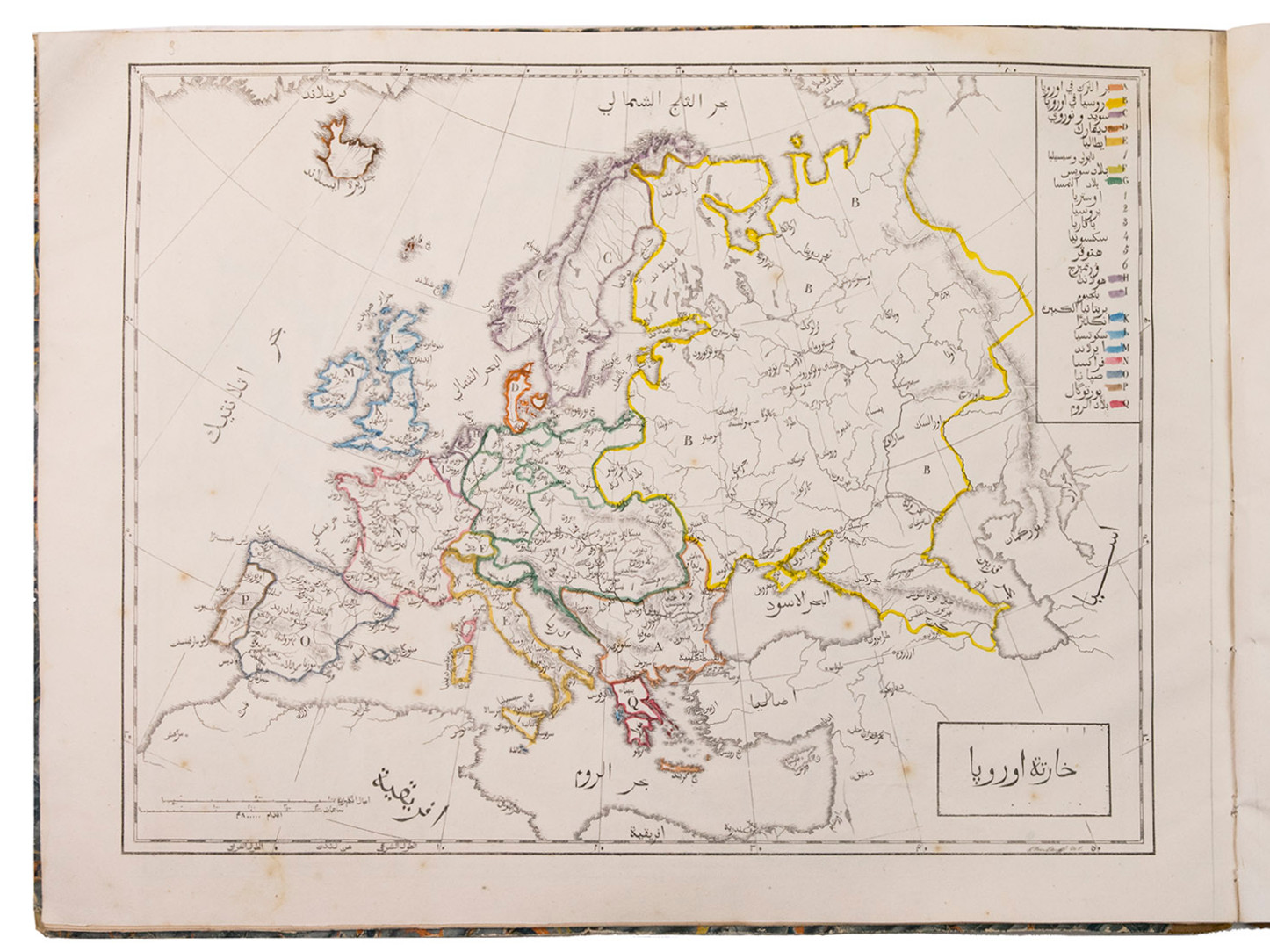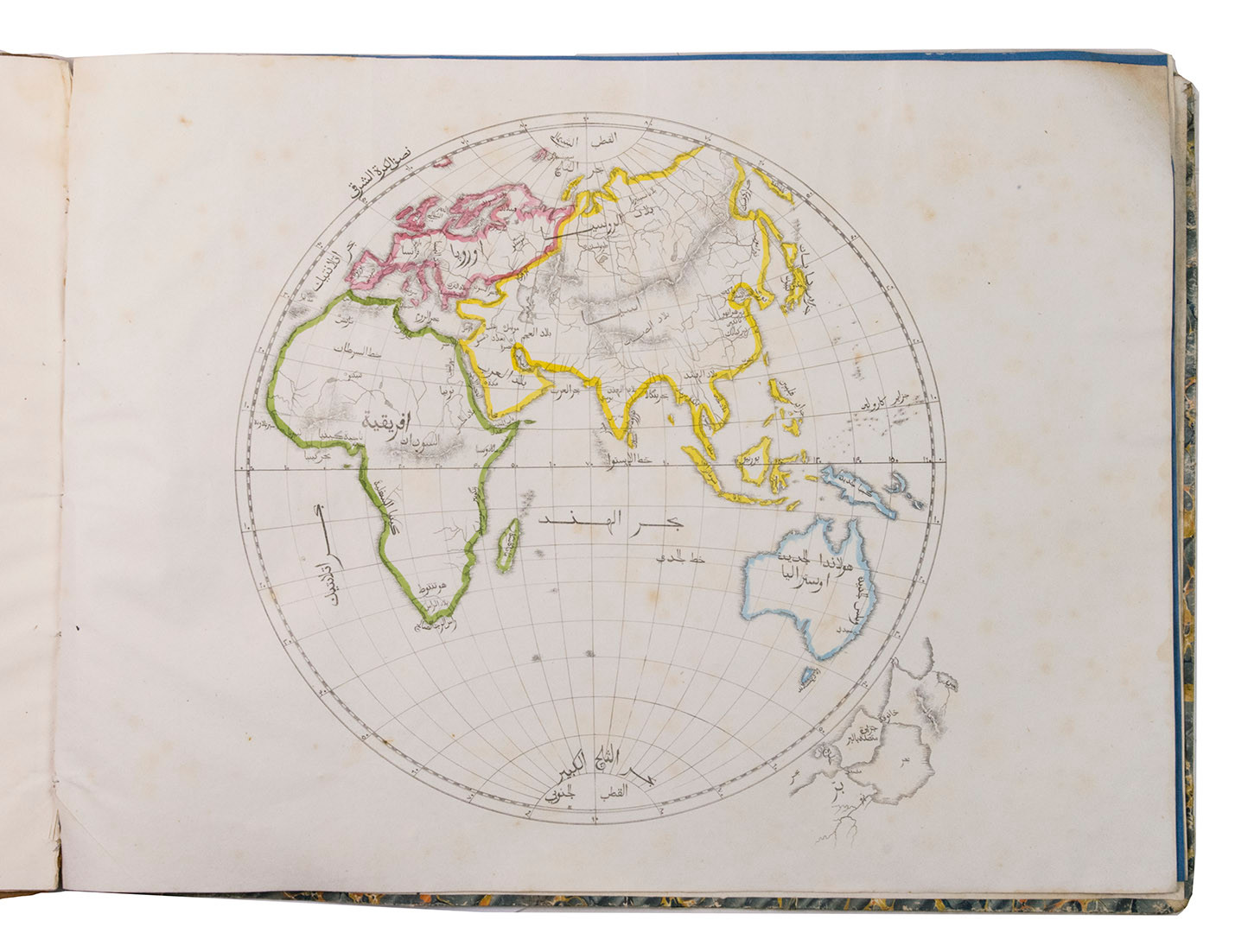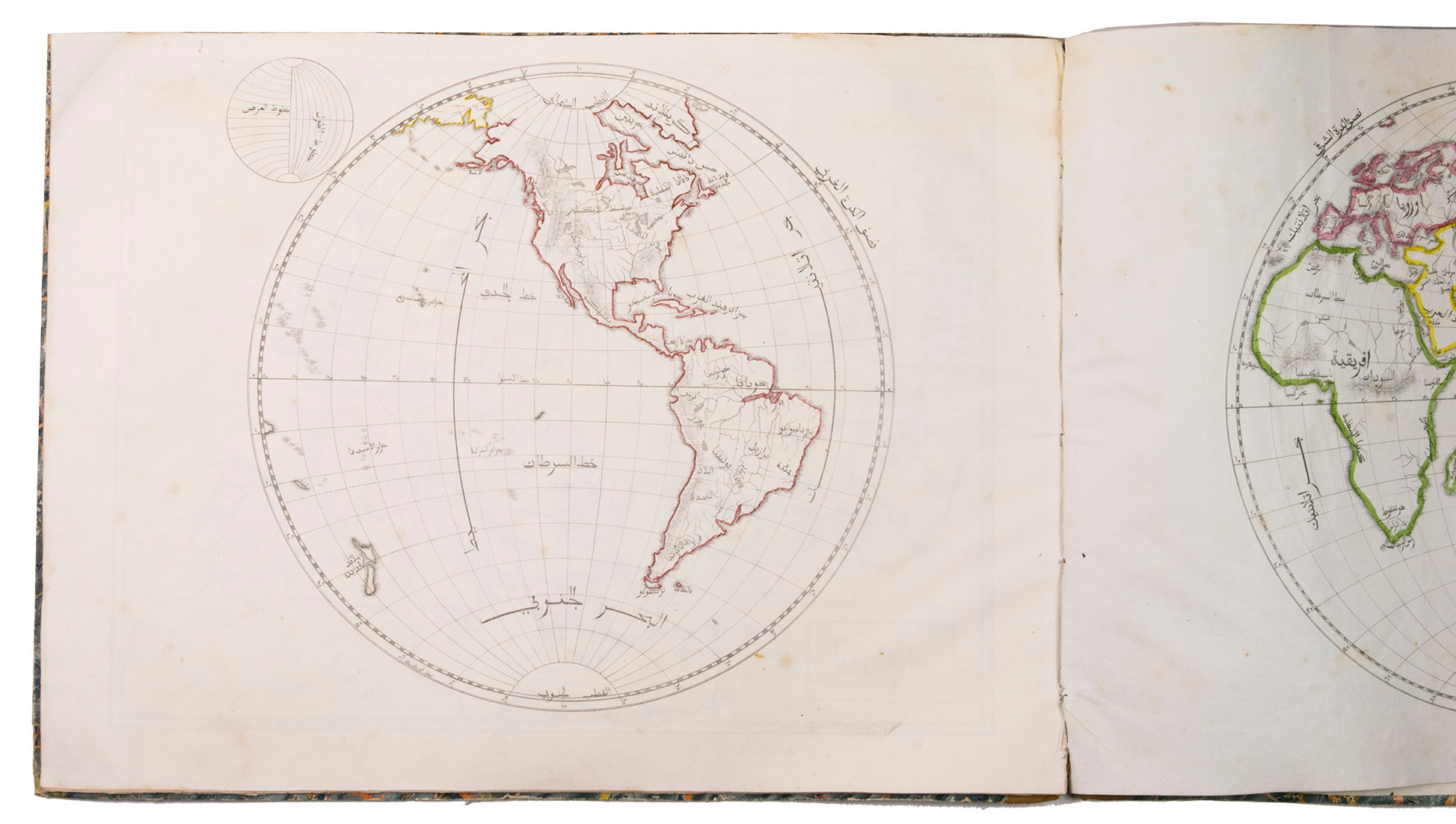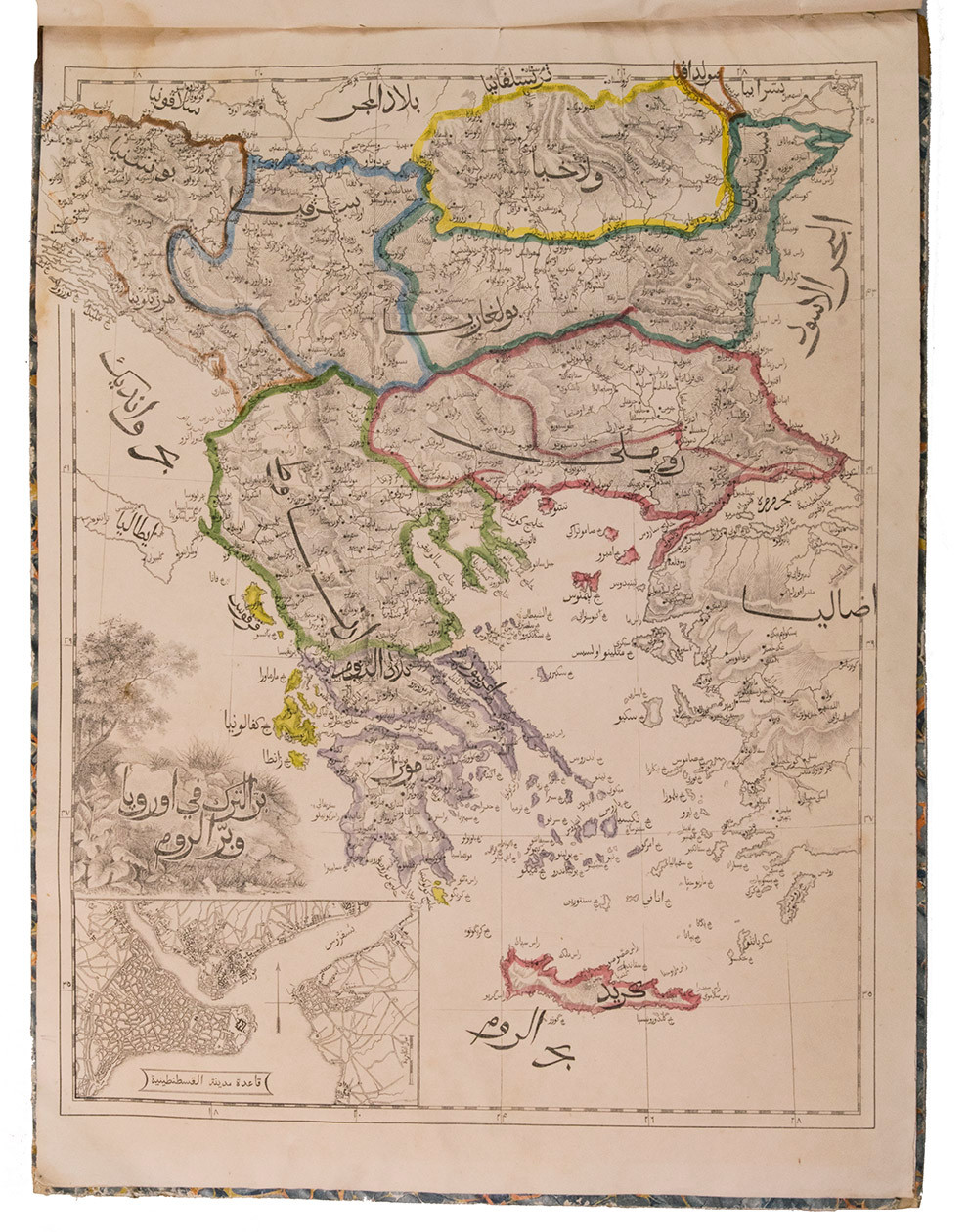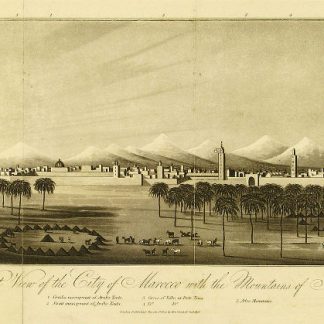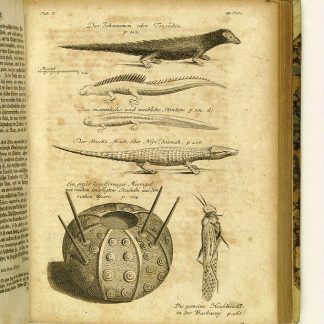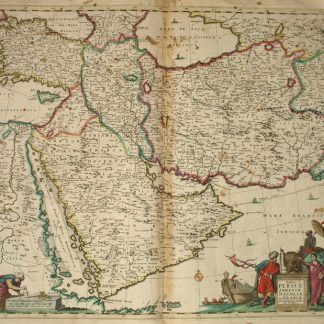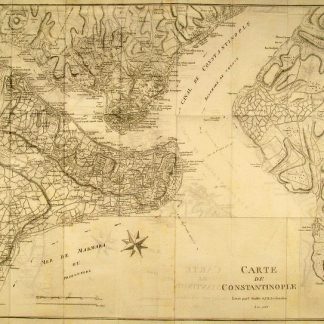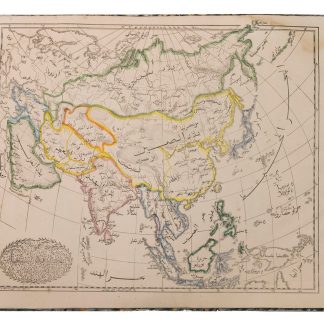The earliest obtainable atlas printed in Arabic
Atlas, ay majmu’ kharitat rasm al-ard [Atlas, or a collection of maps, drawing the earth ...].
Oblong folio (410 x 308 mm). Arabic title-page on blue dyed paper; 11 leaves of maps with hand-coloured outlines (complete). Blank endpapers. Arabic text lithographically printed in a mu'aqqaq style, closely resembling that of Mamluk era Egyptian or Syrian areas. Original half calf binding, worn.
€ 55.000,00
The first obtainable Arabic printed atlas, completely lithographed on European watermarked paper, published by the English Church Missionary Society. This is the second, improved and enlarged edition of a world atlas that had first been issued by the same press two years earlier, which is today considered unobtainable.
Until the 19th century, cartographic publishing in the Muslim world was largely stifled by the Porte's proscriptions on printing. Although several Ottoman Turkish atlases appeared in Constantinople, such as the "Cedid Atlas" (1803) and Katib Celebi's "Cihannuma" (1732), these enjoyed very limited success, while Hajji Ahmed's "Mappamundi" (1559) was produced in Venice for exportation to the Ottoman Empire. None of these works had been in Arabic. Malta, with its proximity to the Arab world and the Ottoman Empire, but its status as a British Crown colony, was a natural place for the first Arabic atlas to be published.
When the Anglican Church Missionary Society decided to establish a Mediterranean Mission in 1815 to evangelize the peoples of Southern Europe, North Africa and the Middle East, it was soon determined that education needed to spread before the evangelical message. In consequence, the C.M.S. created a printing establishment in Malta, ideally situated in the centre of the Mediterranean, on the main communication and trading routes between east and west, north and south. It was the C.M.S. that published most of the Arabic books in Malta between 1827 and 1840. While the output of printed works was impressive, the distribution of books was weak, and with debts mounting, the C.M.S. press had to close in 1842.
Although it was not printed in large numbers, this atlas had a significant impact in the Arab world. It was quickly reproduced in Cairo, from where Lord Lindsay, writing in December 1836, called it "perhaps the most useful work the Pasha has published [...], copied from one the missionaries have executed at Malta".
The 1833 Malta atlas, the very first example of this kind, is unobtainable today, with the only known copies held in the Albert Ganado Melitensia Collection and by the British Museum. The present example, published two years later at Malta, is also exceptionally rare. The 1833 edition has never shown up on the market; no more than three copies of the 1835 one have appeared at auction within the last five decades (the last of which lacked the calligraphic title printed on blue paper, which is present here).

